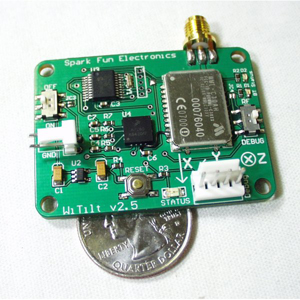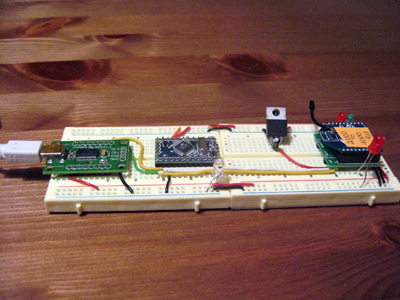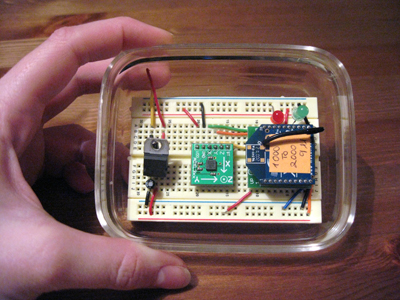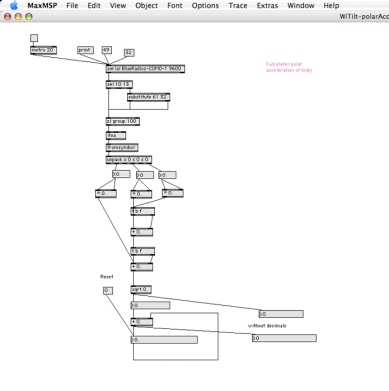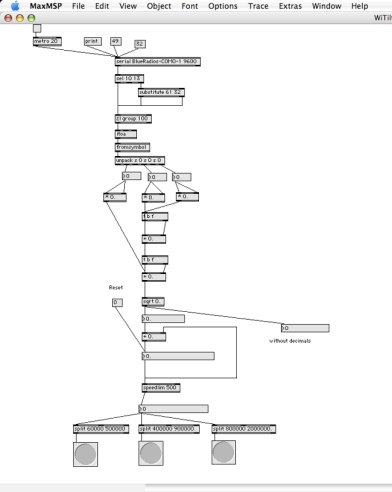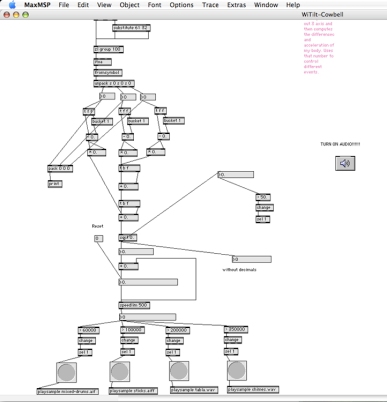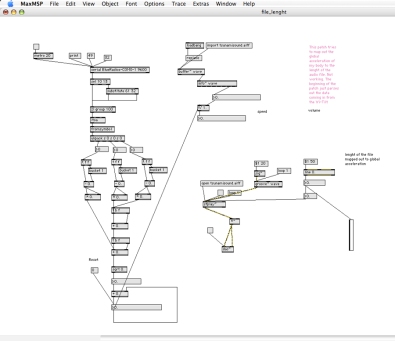The Old Device

The first device that I made thinking about this performance was a little buoy that would change the video and audio of the performance. The accelerometer inside manipulated the luminosity, the tolerance, the fading of the videos with its axis readings, while an hydrophone would apply a color filter to one of the movies. The device used Bluetooth as wireless communication and a Max-MSP patch interpreted its values.
Old tool demo video:
Old tool video effect on a large screen:
Old Interface rebuilt
The old interface is so far composed of:
– mini Arduino
– 3 Axis accelerometer
– GPS module
It will soon include a gyro and instead of the BlueSmirf that i used in my past experiments, i might employ a Zigbee radio instead.

I have a Max patch that interprets the serial coming in and uses the X axis to change video luminosity, the Y axis to change the tolerance, the Z axis to fade from one video to the other. The built in microphone applies a gradient over one of the movies.

The New Device
I am by no mean an advocate of technology for technology’s sake but what I remember from the time when I use to perform in Italy is that there is no real way of predicting the length of a performance. Many things can happen, movements get accelerated, adrenaline plays its part too. So I thought that by calculating and recording my body’s acceleration I could then use this information to map out the performance accordingly. I thought that I could employ my movement energy to set thresholds and manipulate the sound and maybe later the video for this performance. I wanted to play around and experiment with different technologies and tools now in order not to get caught up in frustrating programming later. When I will finally be piecing this performance together I will also be able to, if necessary, plug in one of these tools in my environment.
The new device is simply made of a Wi-Tilt wireless accelerometer and a battery holder. The device uses Bluetooth as wireless technology but needs an antenna in order to travel across one room.
Due to the length issues, another low power digital radio version is available, taking advantage of Zigbee IEEE 802.15.4 standar communication protocol for wireless personal area networks.
The base station simply connects the Receiving Zigbee to the Serial Port on the computer and later to Max-MSP.
The wearable portion of the device sends the analog readings of the accelerometer axis.
Here is the device on being hidden under my clothes:
The device is blinking!
Max-MSP patches
This patch reads the accelerometer readings and computes the polar acceleration of my body.
This patch reads in the total acceleration and waits for the acceleration to reach certain ranges in order to manipulate the audio and trigger samples.
This patch computes the polar acceleration but since the accelerometer does not reach a 0 point, the patch now computes the difference between the most recent value and the previous one in order to only look for changes, so that when my body is not moving a lot the acceleration number will also slow down. This patch also is divided in events and the acceleration will trigger audio samples.
I am also starting to experiment with the idea of having the total acceleration mapped to a linear audio file, therefore allowing me to jump or fast forward to different sections according to my physical movements.
